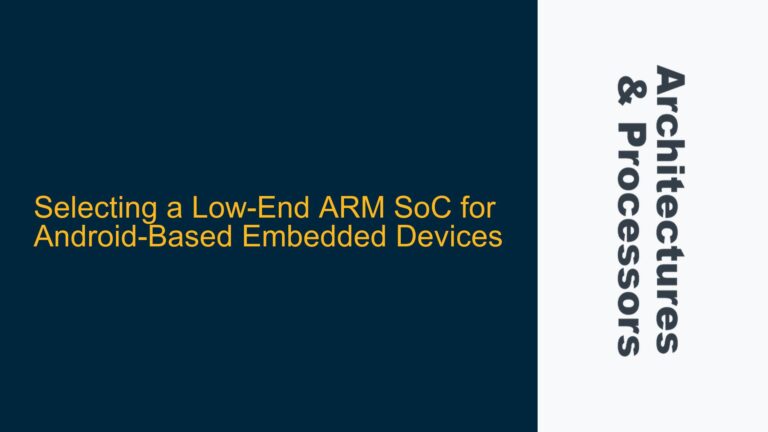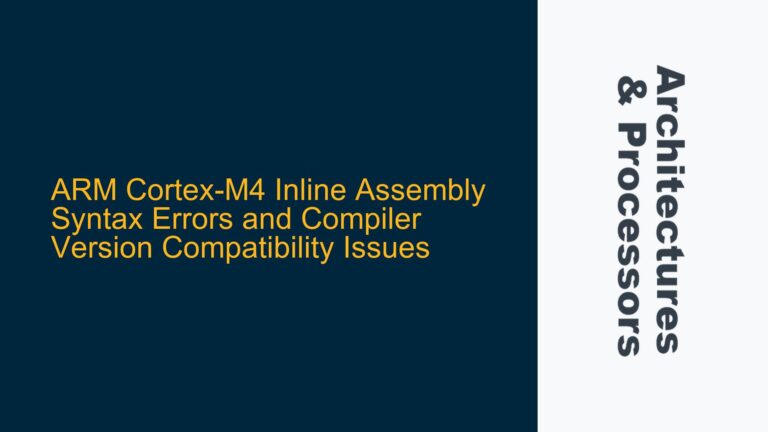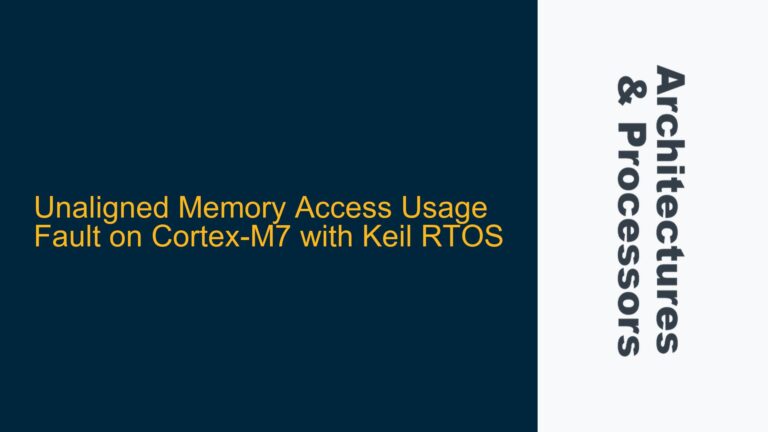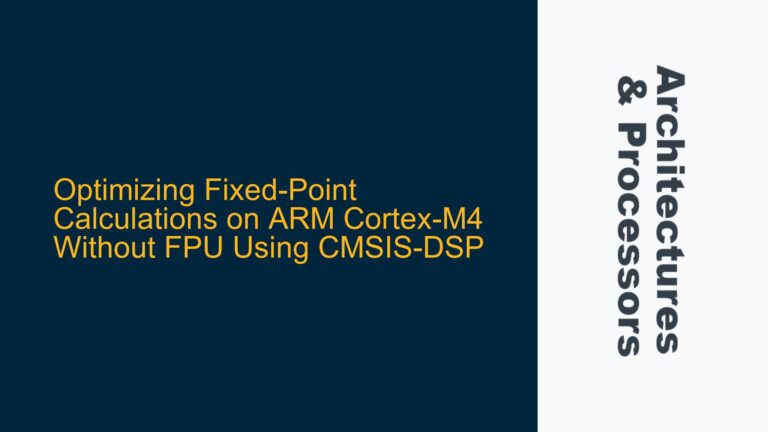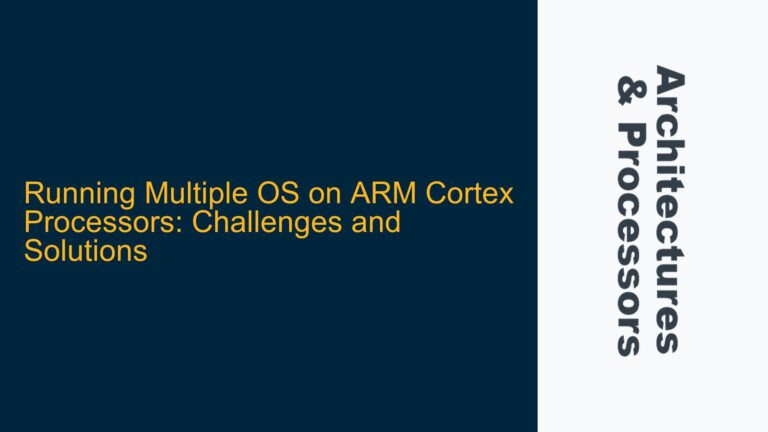ARM Cortex-M4 Exclusive and Locked Access Scenarios
Issue Overview
In ARM architectures, exclusive and locked access mechanisms are critical for ensuring atomic operations in multi-master systems. Atomic operations are sequences of read-modify-write operations that must complete without interruption to maintain data integrity. Exclusive access and locked access are two distinct methods used to achieve atomicity, each with its own use cases and implications for system performance and complexity.
Exclusive access is a more sophisticated mechanism that allows a master to perform a read-modify-write sequence while monitoring a specific address range. If no other master writes to that range during the sequence, the operation succeeds. If another master writes to the range, the operation fails, and the sequence must be retried. This mechanism is particularly useful in scenarios where multiple masters need to access shared resources, such as semaphores or shared memory, without causing data corruption.
Locked access, on the other hand, is a simpler but more restrictive mechanism. It locks a target device or memory range, preventing any other master from accessing it until the lock is released. While this ensures atomicity, it can lead to significant latency issues, especially if the locked resource is large or frequently accessed by other masters.
The confusion often arises when developers need to choose between these two mechanisms, especially in complex systems with multiple masters and slaves interconnected through an AXI or CHI fabric. Understanding the nuances of each mechanism, their implementation details, and their impact on system performance is crucial for designing efficient and reliable embedded systems.
Possible Causes
The primary cause of confusion regarding exclusive and locked access mechanisms stems from a lack of clarity on their respective use cases and the underlying hardware implementation. Here are some specific points that contribute to this confusion:
-
Exclusive Access Monitoring Logic: The exclusive access mechanism relies on a monitor that tracks whether a specific address range has been written to by another master during the read-modify-write sequence. This monitor is typically implemented in the destination device or at an upstream point in the interconnect. However, the exact location and behavior of the monitor can vary depending on the system architecture, leading to uncertainty about when and how the monitor is triggered.
-
Locked Access Latency: Locked access can cause significant latency issues, especially in systems with multiple masters. When a master locks a resource, other masters are blocked from accessing it until the lock is released. This can lead to performance bottlenecks, particularly if the locked resource is large or frequently accessed.
-
Non-Bufferable vs. Bufferable Writes: The choice between non-bufferable and bufferable writes can impact the effectiveness of exclusive access. Non-bufferable writes ensure that the write response (BRESP) is returned by the final destination, which is necessary for the exclusive access monitor to function correctly. However, non-bufferable writes can degrade performance due to the added latency of waiting for the final destination to respond.
-
Interconnect Behavior: The behavior of the interconnect can also affect the success of exclusive access operations. If the interconnect allows bufferable writes, the write response may be returned by an intermediate component (such as a write buffer) before the write reaches the exclusive access monitor. This can lead to false positives, where the exclusive access operation appears to succeed even though the write has not yet been committed to the final destination.
-
Cache Coherency: In systems with caches, cache coherency protocols can interfere with exclusive access operations. If a cache line is in the Exclusive state, a coherence snoop from another master can invalidate the line, causing the exclusive access operation to fail. This adds another layer of complexity to the implementation of exclusive access in cached systems.
Troubleshooting Steps, Solutions & Fixes
To address the issues related to exclusive and locked access mechanisms, the following steps and solutions can be implemented:
-
Implementing Exclusive Access Monitors Correctly: Ensure that the exclusive access monitor is correctly implemented in the destination device or at an upstream point in the interconnect. The monitor should be able to track all accesses to the monitored address range and accurately determine whether a write has occurred during the read-modify-write sequence. This may require custom logic in the destination device or modifications to the interconnect to ensure that all accesses are visible to the monitor.
-
Optimizing Locked Access Usage: Minimize the use of locked access in systems with multiple masters to avoid latency issues. Instead, prefer exclusive access for scenarios where atomicity is required but the resource is frequently accessed by other masters. If locked access is necessary, ensure that the locked resource is as small as possible and that the lock is held for the shortest possible time.
-
Choosing Between Non-Bufferable and Bufferable Writes: Use non-bufferable writes for exclusive access operations to ensure that the write response is returned by the final destination. This ensures that the exclusive access monitor can accurately determine whether the operation was successful. While non-bufferable writes may introduce some latency, the impact on performance should be minimal if exclusive access operations are infrequent.
-
Configuring the Interconnect for Exclusive Access: Configure the interconnect to ensure that all exclusive access operations are visible to the monitor. This may involve disabling bufferable writes for exclusive access transactions or modifying the interconnect to ensure that all writes are committed to the final destination before a response is returned. Additionally, ensure that the interconnect supports the necessary AxCACHE encodings to guarantee that the target monitoring the transactions will actually see the transactions.
-
Handling Cache Coherency in Exclusive Access: In systems with caches, ensure that the cache coherency protocol does not interfere with exclusive access operations. This may involve modifying the cache controller to handle exclusive access operations correctly or using cache maintenance operations to ensure that the cache line is in the correct state before performing an exclusive access. For example, in ARMv8 architectures, the LDXR/STXR instructions can be used to perform exclusive access operations while maintaining cache coherency.
-
Using Load-Link/Store-Conditional (LL/SC) Primitives: In ARM architectures, the LDREX/STREX (or LDXR/STXR in ARMv8) instructions provide a Load-Link/Store-Conditional (LL/SC) primitive that can be used to implement exclusive access. These instructions allow a master to perform a read-modify-write sequence while monitoring a specific address range. If no other master writes to that range during the sequence, the operation succeeds. If another master writes to the range, the operation fails, and the sequence must be retried. This mechanism is particularly useful in scenarios where multiple masters need to access shared resources, such as semaphores or shared memory, without causing data corruption.
-
Implementing Timeouts for Exclusive Access Monitors: To avoid fairness issues in systems with long stalls or interrupts between LDREX and STREX operations, consider implementing timeouts for exclusive access monitors. This ensures that the monitor does not remain active indefinitely, which could prevent other masters from accessing the resource. The CLREX instruction can be used to clear active monitors in an interrupt handler, ensuring that the monitor is reset if an interrupt occurs during an exclusive access sequence.
-
Testing and Validation: Thoroughly test and validate the implementation of exclusive and locked access mechanisms in the target system. This includes testing for race conditions, ensuring that the exclusive access monitor functions correctly, and verifying that the system performs as expected under various load conditions. Use simulation and emulation tools to model the behavior of the system and identify potential issues before deploying the system in a production environment.
By following these steps and solutions, developers can effectively implement and troubleshoot exclusive and locked access mechanisms in ARM-based systems, ensuring atomic operations and maintaining data integrity in multi-master environments.

